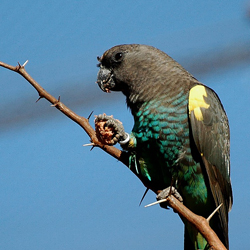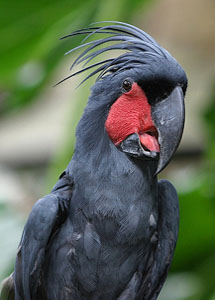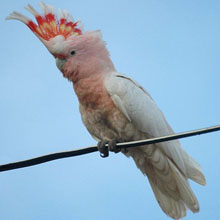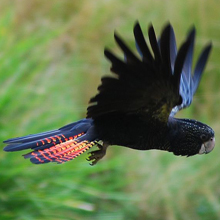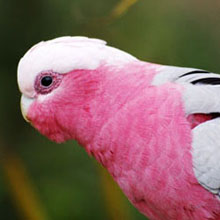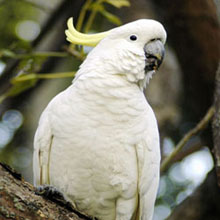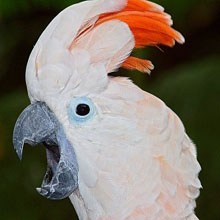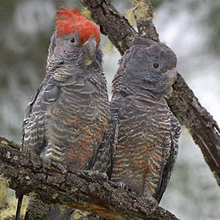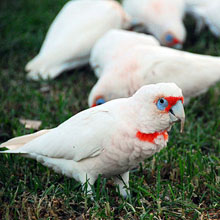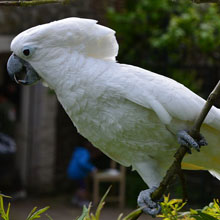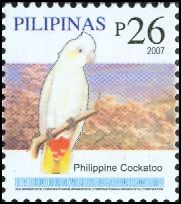Cockatoos
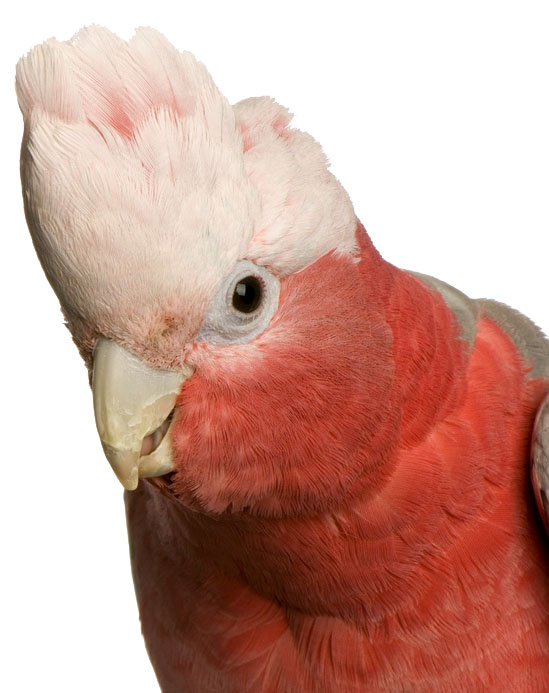
There are twenty-one bird species in the cockatoo family. The cockatoo (or Cacatuidae) family is included in the order Psittaciformes, but they are not classified as "true parrots."
One of the biggest differences between cockatoos and other parrots are the feathers on top of their heads. Cockatoos have unique crest feathers that are moveable, and unlike the "true" parrot species, cockatoos have a gall bladder!
Cockatoos also do not have oil glands that commonly facilitate preening. Instead, cockatoos produce a fine powder that results from the breakdown of downy feathers. This powder helps to protect their feathers and keep them clean. As a result, they create a lot of "dust" which may not be good for people with allergies.
The smallest species in the cockatoo family is the cockatiel and the largest is the Yellow-Tailed Black Cockatoo. Cockatoos are mostly white, black, pink or grey, and they often have vivid accent colors including yellow, salmon, orange and red.
Cockatoos are complex birds. If properly socialized they can make good pets, but they are definitely NOT birds for beginners with the exception of the cockatiel.
Cockatoos are prone to behavioral problems such as aggression, biting, feather destruction and self-mutilation. Parrot rescues are overrun with cockatoos that have been given up by inexperienced owners!
Cockatoos are the loudest of all the parrot species so they are usually not suited to living in apartments.
Cockatoos are not known for their talking skills, but they are good at learning tricks and they love music and dancing. They are also considered the loudest of all parrots and very destructive. Because of this, cockatoos need lots of toys to keep them busy.

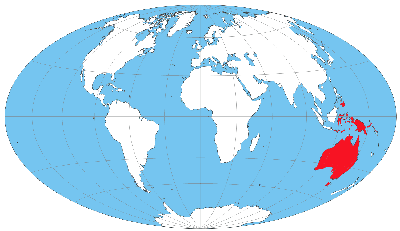 Cockatoos are native to Australasia a geographical region which includes Australia, the Philippines, Indonesia and the Solomon Islands.
Cockatoos are native to Australasia a geographical region which includes Australia, the Philippines, Indonesia and the Solomon Islands.
The cockatoo's habitat varies by species. Cockatoo habitats include rainforests, woodlands, shrublands and even alpine forests!
In the wild, cockatoos are highly social, and mixed flocks will forage, fly, and roost together.
The cockatoo's diet in the wild consists mainly of seeds, fruits, flowers and insects. Some species prefer to forage on the ground while others will only feed in the trees. In their native lands some cockatoos are considered agricultural pests due to the severe damage they can do to farmer's crops.
The wild population of some species of cockatoos are declining primarily due to loss of their habitats and nesting holes. Other cockatoo species are threatened due to illegal trapping.
Check out this National Geographic segment on cockatoos:
Listen to Sulfur-Crested Cockatoo in the wild:
Cacatua galerita
© 2015 Cornell University
Watch a video of Major Mitchell's cockatoos in flight:
Source: The Internet Bird Collection
View a video of about Palm Cockatoos:


To see more pictures and obtain information about individual cockatoo species click on the links below:
Common Name
Origin
Genus/Species
Life Span:
15 - 80 yrs.
Length:
12 - 26" (30 - 66 cm)
Weight:
10 - 42 oz. (300 - 1200 grams)
*Life span size and weight all vary greatly by species
- Cockatoos became very popular as pets in the 1970's when a Triton Cockatoo starred in a detective series named Baretta.
- Did you know that most cockatoos are left-handed?
- Some people have nicknamed cockatoos "lap puppies" because they love lots of attention, petting and cuddling.
- For some mature cockatoo species, you can often distinguish male and female cockatoos by the color of their eyes. The male's eyes tend to be darker in color than the females.
- Male Palm Cockatoos dance and use a stick to drum on hollow logs to attract females.
- Palm Cockatoos can easily crack brazil nuts with their beaks.
- You can often tell the mood of a cockatoo by looking at the position of their crest feathers. If they are standing straight up it means they are surprised or excited about something. If the crest feathers are relaxed then your bird is relaxed.
- One anatomical difference between cockatoos and "true parrots" is that cockatoos have gall bladders.
- Cockatoos are known for being very mechanical and many are good at escaping from their cages.
- Some people believe that the sight of Red-tailed Black cockatoos means rain.
- Do a jigsaw puzzle of a cockatoo.
- Take a quiz about Cockatoos.
- Print a Goffin Cockatoo coloring page.
- Print a coloring page with a Mollucan Cockatoo and a Sulfur-Crested Cockatoo
- Check out these cockatoo stamps from Palau, Australia and the Philippines:
- Watch a funny video of a Cockatoo "jail break"
- Check out the fantastic dancing moves of Frostie:
Related Articles
 Cockatiels
Cockatiels
 Australian Parrots
Australian Parrots







































